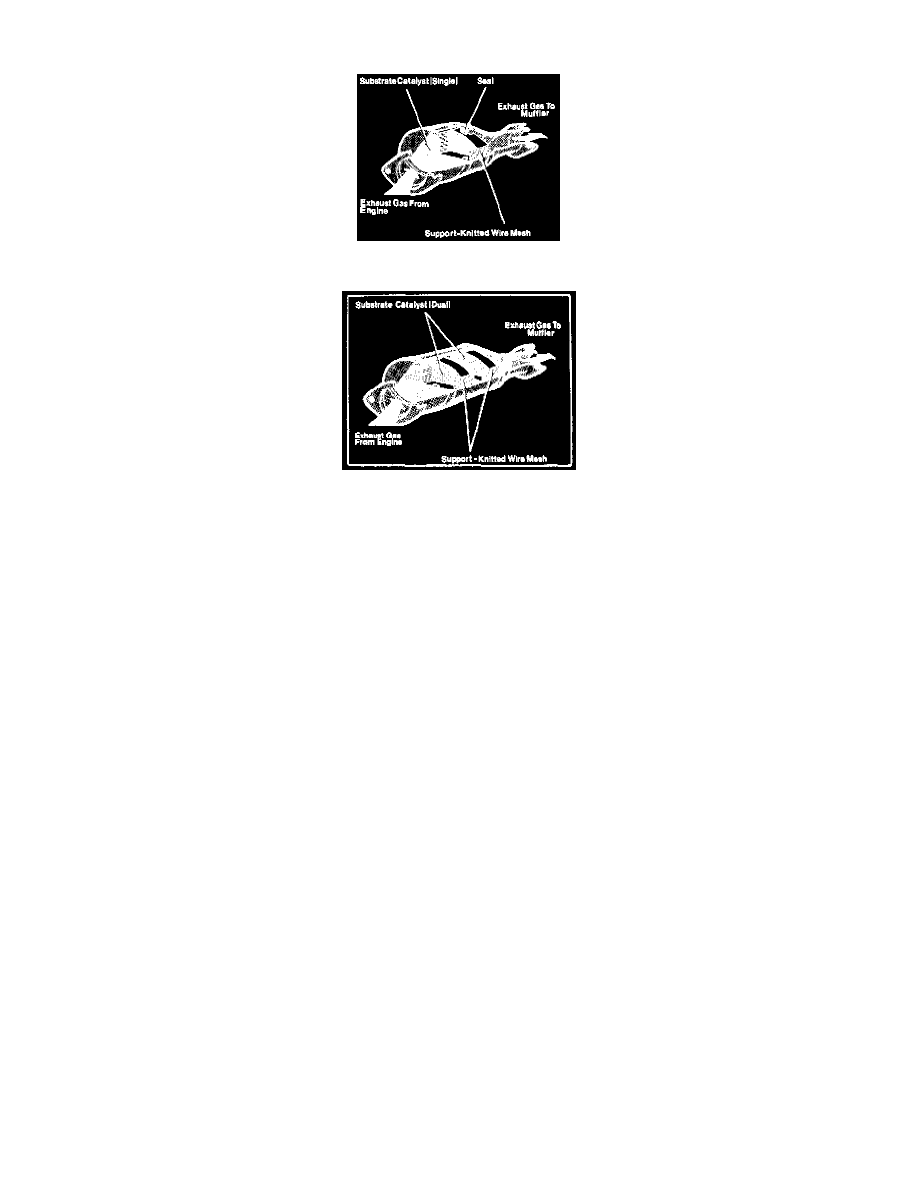F 250 4WD Pickup L6-300 4.9L (1982)

Catalytic Converter: Description and Operation
Fig.8 - Catalytic Converter With Single Substrate Catalyst
Fig.9 - Catalytic Converter With Dual Substrate Catalyst
The catalytic converter is an emission control device added to the exhaust system to effectively reduce the levels of carbon monoxide (CO),
hydrocarbons (HC), and in some cases oxides of nitrogen (NOx), entering the atmosphere. The converter permits a faster chemical reaction to take
place and although it enters into the chemical reaction, it remains unchanged, ready to repeat the process.
The catalyst in these converters is structured in the form of a honeycomb monolithic composition, Figs. 8 and 9. The catalyst consists of a porous
substrate of an inert material, coated with platinum and other noble metals (the catalytically active materials).
NOTE: Phase II Catalytic Converters or Dual Catalytic Converters which also control the NOx emissions, are used on some 1978-82 vehicles.
During engine operation, all of the exhaust gases flow through the converter where a chemical change takes place. This change causes the
temperature inside the converter to be higher than the temperature of the exhaust gases when they leave the engine. Due to this increase in heat, the
converter is insulated so that its outside temperature is about the same temperature as the muffler. However, due to its solid mass, the converter
remains hot much longer than the muffler.
The body of the catalytic converter is made of stainless steel designed to last the life of the vehicle. Excessive heat can bulge or distort the
converter. Since excessive heat built up is not the fault of the converter, the carburetion or ignition system should be checked whenever a converter
is damaged by overheating.
Although all vehicles with catalytic converter must use unleaded fuel, small amounts of leaded fuel can be used in case of an emergency. To
prevent adding leaded fuel, the fuel tank filler nozzle has a built-in restrictor.
Heat shields are used on some vehicles to protect chassis components, passenger compartment, and other areas from heat damage that may be
caused by the catalytic converter.
